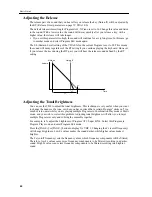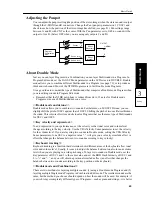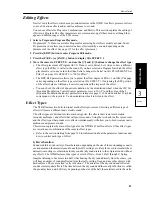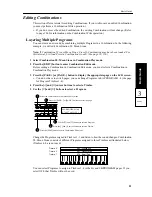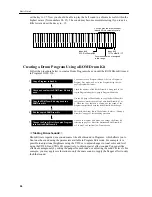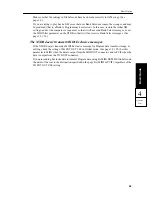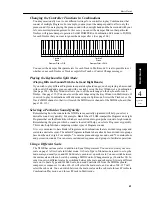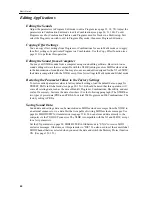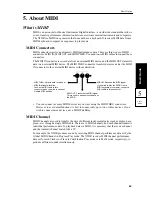
Basic Guide
50
Effects and Sound Level
You can use the effects in Programs, Combinations, and Multi mode setup. However, the effects
are set for each sound—that is, the effects are set for each Program. Combinations use the effects
that are set for each Combination (and not the effects that are set for the Programs assigned to the
Timbres). Multi mode uses the effects that are set for the entire Multi mode (and not the effects
set for the Programs in the tracks). Remember this when you use Programs that utilize their own
effect settings in Combination Play mode and Multi mode.
• You can make a copy of the effect settings for Programs using the Copy Effect function (see
page 119).
<<Effect Placement>>
The effect placement determines how the signal is routed from the OSC 1/2 output (that is, the
input to the effects) to the Effects 1/2. Using this setting allows you to process various sounds.
Routing the Pan A, B and Send C, D in various ways will allow you to build a complicated effect
structure. Utilize the effect placement diagram for the effect settings (page 117).
<<Dynamic Modulation>>
Dynamic modulation is a powerful function that allows you to control the effect balance and
parameters during performance. You can adjust the effects or obtain effects that could not be
achieved through usual external effect units, using Control Change messages such as modulation,
or VDA EG. The type of parameter you can control via dynamic modulation varies depending on
the effect type. Refer to page 145 for details.







